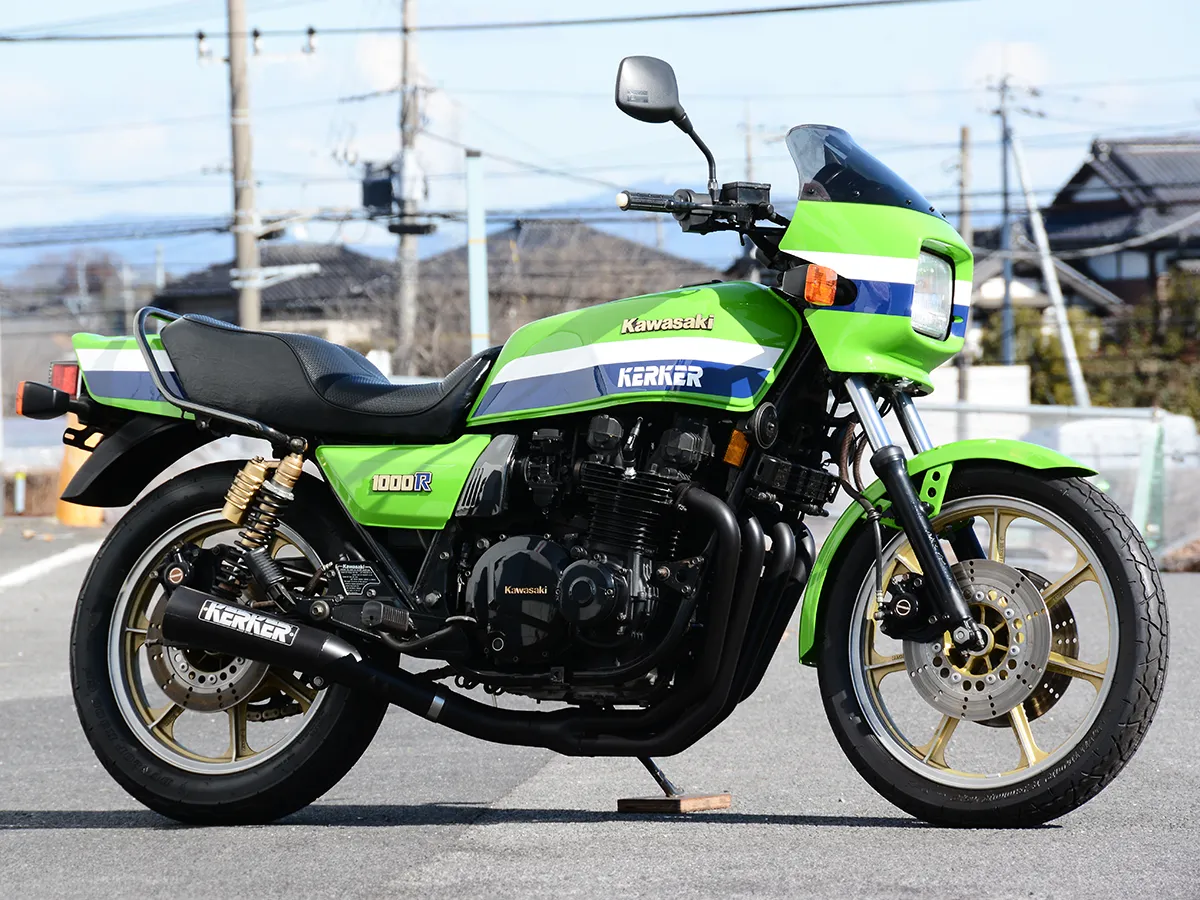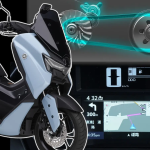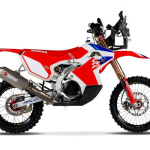Interview Assistance by:BIKE O Discontinued Model Gallery
Known as the "Lawson Replica," the Z1000R was released to commemorate Eddie Lawson's victory in the AMA Superbike Championship. Dressed in lime green Kawasaki works colors, the "Z1000R" was the first "racer replica" released by Kawasaki.
"Z1000R" symbolizes the second generation of Z
The AMA Superbike Championship, held in the United States from 1976 to 2015, produced many American WGP riders. Among them was Eddie Lawson, known as "Steady Eddie," a legendary rider who won the world championship three times with Yamaha and once with Honda.
Eddie Lawson began competing in AMA Superbike in the 1980 season, while also competing in the GP250cc class. In the 1981 season, he competed on a Z1000J and won the championship ahead of Freddie Spencer on a Honda CB.

Eddie Lawson's number in the AMA Superbike Championship is "21"; Lawson wins four races to Spencer's three in the 1981 season to become champion.

The North American model of the Z1000J was the first model of the second generation air-cooled Z. Based on this motorcycle, Rob Magee built Lawson's championship machine.
In the 1980 season, Lawson raced a Z1000J-based racer by Rob Magee, numbered 21, and the Z1000R, released in North America to commemorate that year's championship, was equipped with the same square tank and bikini cowl as the Z1100GP, which debuted that same year. In the 1982 season, Lawson won the championship again with the Z1000S1 based on the Z1000R, and in 1983, the Z1000R2 was released for North America, Europe, etc. In 1982, the Z1000S1, a complete machine incorporating kit parts from the Z1000J/R, was released for privateers. The S1 kit included a twin plug head and the “S1 type swingarm” that was later reproduced in the ZRX series and other models.

The Z1000R, launched to commemorate Lawson's championship in 1981, sold about 900 units in North America.

It was painted in lime green, Kawasaki's works color, and equipped with KERKER assembly tubes and a special seat.

For the 1982 season, Lawson entered the Z1000R-based Z1000S1 and won the championship for the second year in a row. A complete S1 kit was also released for privateers.
Lawson moved to Yamaha and began competing in the WGP in 1983, the same year that the "Z1100R" with a GPz1100-based engine was also released.

After Lawson left Kawasaki, the Z1000R2 and Z1100R were released.
The engine that won AMA Superbike and World Endurance
The Z1000R is based on the Z1000J, which was introduced in 1980. The “Z1000J” was developed as the successor to the “Z1000MKII,” and was the first Z of the second generation with a newly designed frame and a greatly refined engine. The former Z1000 series up to the “Z1000MKII” had a bore x stroke of 70 x 66 mm (1015 cc), but the “Z1000J” changed this to 69.4 x 66 mm (998 cc) in accordance with changes in race regulations. Maximum output was increased from 93 PS at 8000 rpm to 102 PS at 8500 rpm, exceeding 100 PS for the first time in the Z series, and maximum torque was increased from 9.1 kgm at 6500 rpm to 9.3 kgm at 7000 rpm. The “Z1000R” is basically equipped with the same spec engine as the “Z1000J. This engine was also used as the basis for the “KR1000” endurance racer, which won the manufacturer's title in the World Endurance Championship for three consecutive years from 1981 to 1983.

The handlebars are up, the upper body is quite upright, and the step is almost directly under the body, a position typical of a street bike.

A 171cm tall, 65kg rider sitting astride. The seat height is not so high, but the width of the seat makes the heels of the rider's feet float up.

The air-cooled four-cylinder engine is based on the Z1 series engine, but has been significantly modified, mainly above the waist, to become the second generation.

While the 998cc engine has a bore x stroke of 69.4 x 66 mm in accordance with changes in race regulations, maximum output has been increased from 93 PS to 102 PS.

The Z1000J's engine was changed from the earlier 1015cc to 998cc to meet racing regulations. The "KR1000" based on this engine was unbeatable in endurance races.
The "Z1000R" is equipped with a square light + bikini cowl, a square tank, and a seat with a large step between the rider and passenger, etc. The rear shock is equipped with a reservoir tank, a champion sticker is placed on the top of the tank, and the exhaust system The exhaust system was also fitted with a megaphone type made by KERKER.
The “Z1000R2” released in 1983 had new graphics from the tank to the seat cowl, and was available in white as well as lime green. The European version had the usual two-pipe muffler instead of the KERKER one, and the engine specs were 104 PS maximum output at 8500 rpm and 9.1 kgm maximum torque at 7000 rpm, with slightly more power and less torque. Since Lawson had moved to Yamaha by the time of its release, the R2 and later models were no longer called “Lawson replicas” but “Superbike replicas.

The Z1100GP's rectangular light + bikini cowl will be installed to create a stylish design.

The meter is a trinocular type with a small-diameter fuel gauge in the center. Indicators are housed inside the meter, and the distance meter is provided separately.

The Z1000J is equipped with a so-called square tank with a capacity of 21.4 L. The North American version of the Z1000J was equipped with a round tank, while the European version was equipped with this square tank.

The championship sticker with Eddie Lawson's signature on the top of the tank was only placed on the first "Z1000R".

The seat, which has a large step between it and the passenger seat, follows the design of the seats on superbike racers.

The seat cowl also gets the same white and blue stripes as the tank. The placement of the stripes has been changed on the Z1000R2.

The step holder, which gives a rather rugged impression, is attached to a step with an equally rugged rubberized step.

A KERKER assembly-type exhaust system was installed as standard equipment. It was extremely rare at the time for a manufacturer to use an exhaust system made outside the company.

The front wheels are 19 inches, with gold-painted seven-spoke cast wheels.

The front brakes are a combination of 280mm disc rotors and 1-pot calipers, which are double mounted.

The swingarms are simple round steel, and the rear wheels are the same 7-spoke type cast wheels as the front, but are 17 inches in size.

The rear shock is fitted with a gold-painted reservoir tank, and the rear brakes are a combination of 270mm disc rotors + 1-pot calipers.
It is a "racer replica" that symbolizes the Superbikes that were competed in "production-based racing," rather than "production-based racing" as is the case today, and is a legacy of Kawasaki's racing history.
Z1000R Major Specifications (1981)
Overall length x width x height: 2240 x 845 x 1230 mm
Wheelbase: 1520mm
Seat height: 775mm
Dry weight: 222kg
Engine: Air-cooled 4-stroke DOHC 2-valve inline 4-cylinder 998cc
Maximum output: 102 PS/8500rpm
Maximum torque: 8.5kgm/7000rpm
Transmission: 5-speed return
Fuel tank capacity: 21.4L
Brakes: F=disc, R=disc
Tire: F=100/90-19, R=120/90-18
Photography cooperation: Bike O Discontinued Model Gallery

The showroom is stocked with discontinued models of all genres. The showroom is stocked with a large number of models in different colorings, so you are sure to find one to your liking.
Address: 120 Koken, Tsukubamirai-shi, Ibaraki, Japan
Phone: 0297-21-8190
Hours of operation: 10:00-19:00
Closed: Thursday
See KAWASAKI Moto Index Page
See KAWASAKI Z1000R (KZ1000R) Parts & Accessories Page



